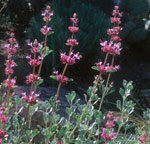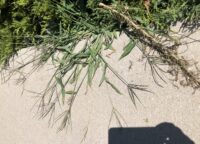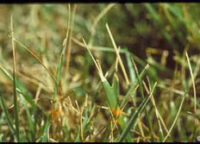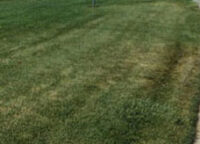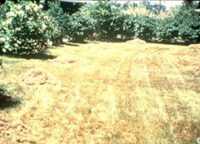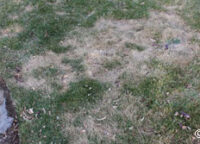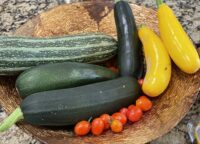- 02, 07, 2017
- Comments Off on 2026 – Plant Select® 2005
- By cwis672
2026 – Plant Select® 2005
The Plant Select® program of 2005 introduces and recommends the following plants for regional gardens. This year’s selections reflect the program’s standard for outstanding performance in gardens in the Rocky Mountain region and beyond. Mojave Sage (Salvia pachyphylla) is a shrubby perennial that features intensely aromatic evergreen foliage that is a silvery green color. […]
Take a Tour- 02, 06, 2017
- Comments Off on 1759 – Excessive Seed Production on Trees
- By cwis672
1759 – Excessive Seed Production on Trees
Most of the Front Range is often below normal for precipitation which stresses trees, shrubs and lawns. Colorado’s semi-arid climate tests plants to their limits, and sometimes they suffer. The winters are often relatively dry in the Front Range. A dry March and April with frequent high winds stresses trees just before leaf emergence and […]
Take a Tour- 02, 02, 2017
- Comments Off on 1513 – Crabgrass
- By cwis672
1513 – Crabgrass
While crabgrass is found in Colorado lawns, much of what is often called crabgrass are other weedy grasses. In the late winter or early spring, the most common grassy weeds in lawns are perennial grasses like quackgrass, tall fescue or bromegrass. How can I kill crabgrass? These perennial weeds can only be killed with a […]
Take a Tour- 01, 24, 2017
- Comments Off on 1527 – Leaf Blight of Turf
- By cwis672
1527 – Leaf Blight of Turf
Diseases and the names used to describe them are abundant on Kentucky bluegrass lawns. One of these problems, a leaf blight, can occur whenever the grass is green. Called Ascochyta leaf blight, this disease is stress related. For example, it may occur on newly sodded turf, or any established lawn that has experienced a dry […]
Take a Tour- 11, 29, 2016
- Comments Off on 1533 – Fertilizing Lawns in Spring & Summer
- By cwis672
1533 – Fertilizing Lawns in Spring & Summer
It is easy to get spring fever as the end of winter approaches. Many people want to begin gardening and lawn improvements in April. Even retailers encourage us to do so by stacking lawn fertilizer in front of grocery stores and garden centers. Spring newspaper and radio ads feature lawn care products and fertilizers. This […]
Take a Tour- 11, 29, 2016
- Comments Off on 1535 – Fall Lawn Fertilization: During Drought
- By cwis672
1535 – Fall Lawn Fertilization: During Drought
Fall fertilization of cool-season lawns such as Kentucky bluegrass is a common and recommended practice for Colorado. When watering is not restricted, fall fertilization increases turf quality during the fall and following spring and promotes healthy fall and spring rooting. Watering restrictions and cutoffs create situations where this practice should be modified or not practiced […]
Take a Tour- 11, 17, 2016
- Comments Off on 1412 – Hollyhock Rust
- By cwis672
1412 – Hollyhock Rust
Hollyhock plants don’t have many disease problems, but one fungus that plagues them is rust. All of the green parts of the plant are susceptible to infection. The plant rarely dies from rust, though severe infections cause yellowing and early leaf drop. Rust occurs most often in the spring and autumn. Early detection is important […]
Take a Tour- 11, 15, 2016
- Comments Off on 1492 – Necrotic Ring Spot
- By cwis672
1492 – Necrotic Ring Spot
The symptoms of necrotic Ring spot (NRS), which include the formation of ‘frogeye’ patches of live grass in the center of an outer circle, will appear in the summer in Kentucky bluegrass lawns. While the grass roots become infected by this root-rot fungus in the late spring, the frogeye symptoms appear later in the year […]
Take a Tour- 10, 28, 2016
- Comments Off on 1410 – Vegetable Seedling Pests
- By cwis672
1410 – Vegetable Seedling Pests
A number of pests will attack vegetables before and after seedlings emerge. Damping off and seedling blights caused by various fungi can rot seeds before they are visible above ground. Sow vegetable seeds at the recommended time when soils have warmed, and use seeds of high vigor. This allows seeds to germinate quickly before they […]
Take a Tour- 10, 28, 2016
- Comments Off on 1805 – Cucumbers & Squash
- By cwis672
1805 – Cucumbers & Squash
Cucumbers and squash, the most common vine crops, are easy to grow in Colorado at elevations below 5,500 feet. They require a long, warm growing season of at least 50 to 65 days. In lower elevations in the southeastern part of the state, muskmelons and watermelons also will do well. They require at least 80 […]
Take a Tour
